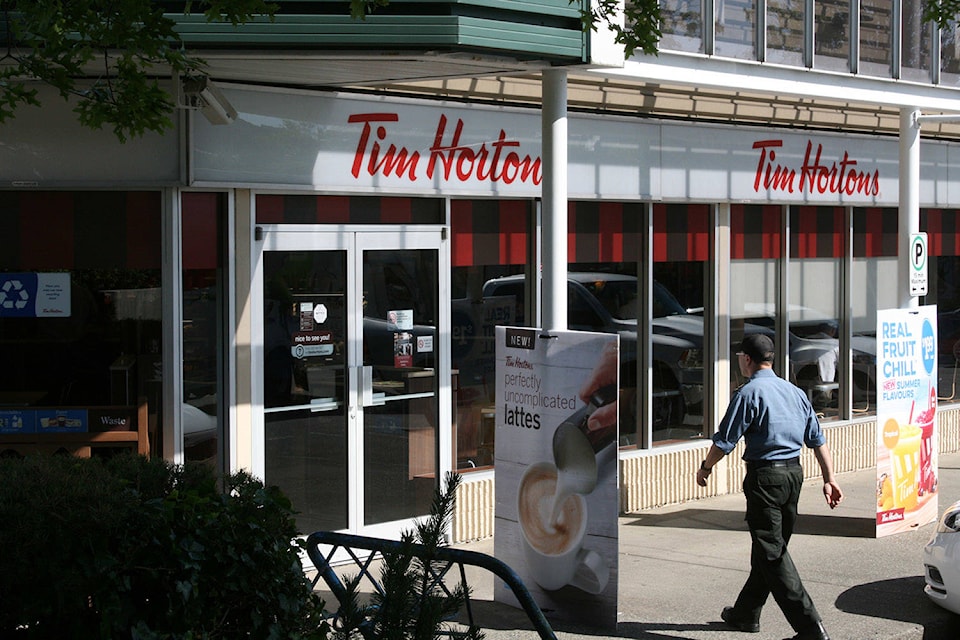A sizzling job market. High housing costs. Changing social norms. An aging society. These are just some of the larger realities that currently confront local employers in the low-to-medium wage sector such as fast food.
Catherine Holt, chief executive officer of the Greater Victoria Chamber of Commerce, knows their struggle well. Businesses across the region are struggling to fill minimum wage jobs, she said.
“If you are in tight job market, it’s difficult to attract interest in minimum wage jobs,” she said. “That is an economic reality. People have other options.”
Indeed they do. According to the latest available Statistics Canada information, the seasonally adjusted unemployment rate for Victoria in May was 3.9 per cent.
Several larger trends account for this development, said Holt. They include the area’s booming real estate and construction industry. “So when you have this magnitude of construction, it sucks in a lot of available labour,” she said. “We have maxed out on available workers in the construction industry.”
Record tourism numbers have also contributed to the low unemployment rate by boosting all types of businesses that depend on tourism traffic, such as restaurants and retail, Holt said.
This reality has intensified local competition for jobs at the lower end of the wage scale, where most employers already offer more than the current minimum wage of $10.85 per hour.
Consider the Tim Hortons location in Saanich Plaza. The high-profile location across from Uptown shopping centre draws a steady crowd of customers throughout the week. But last month the store had to cut back on opening hours, because it lacked staff.
“We are not getting enough locals [applying for jobs],” said the store’s manager Tom, who did not want to give his last name.
To help fill labour needs, the store has been looking to hire exchange students, he said, adding everybody in his industry finds themselves in the same boat. The tight local labour market has also made the hiring process less selective, he added.
“I’m hiring people who are applying,” he said.
Holt said she understands business owners have cut back on operational hours, because they lack staff.
“It’s not a desirable decision, but what option does that owner have?” she said. While owners facing labour shortages could raise wages, they run the risk of alienating customers, who themselves might be financially squeezed.
This reality in turn points to one of the central problems confronting all of Victoria: its high cost of living, with the high cost of housing being the primary driver.
“That [housing] is a factor with any minimum wage job,” said Holt. “The higher your rents go, the less attractive low-wage employment becomes.”
In the past, average salaries would allow individuals to afford average accommodations, said Holt. Those days are gone, she said. According to the Canada Mortgage and Housing Corporation, housing is considered to be affordable when households spend less than 30 per cent of their respective income on housing.
Accordingly, workers who earn $45,000 a year would have to spend no more than $13,500 a year – or $1,125 a month – on housing to live affordably. Current average rental rates have already approached or exceeded that monthly figure, according to published information.
In short, living in the Greater Victoria region off minimum wage is very difficult, if not impossible, said Holt. Even teenagers, who have traditionally filled low-paying entry jobs, find them increasingly inadequate to help pay for their lifestyles.
Other factors might also becoming into play. Research from the United States has found that a growing number of teenagers are spending their time hitting the books instead of flipping burgers during the summer.
Finally, all employers confront the reality of an aging society, where fewer young people, will have more choices.
So what is to be done? Writing in the chamber’s newsletter, Christine Willow of Chemistry Consulting said current “recruitment challenges” require employers to be “creative and use a multifaceted approach to attract and keep the employees they need to operate an efficient business and meet their customers’ expectations.”
They include targeting what Willow calls “alternative labour pools” like mature workers, immigrants and youth, including persons with disabilities.
For each group, employers must “customize” engagement, she said. While mature workers are more likely to look for job postings in traditional media, today’s youth “almost solely engage and communicate on their mobile devices.” Notably, McDonald’s recently used Snapchat to help hire more than 250,000 workers in the United States.
Willow also emphasizes retention. “It is much easier to keep the employees you have than to try to find new ones,” she said. “Ensuring that you have best practices in place and being an employer of choice will give you the advantage over other employers vying for the same person.”
Notably, she argues that being an employer of choice goes beyond compensation and general benefits. “It includes opportunities for professional growth and development, training and career advancement.”



